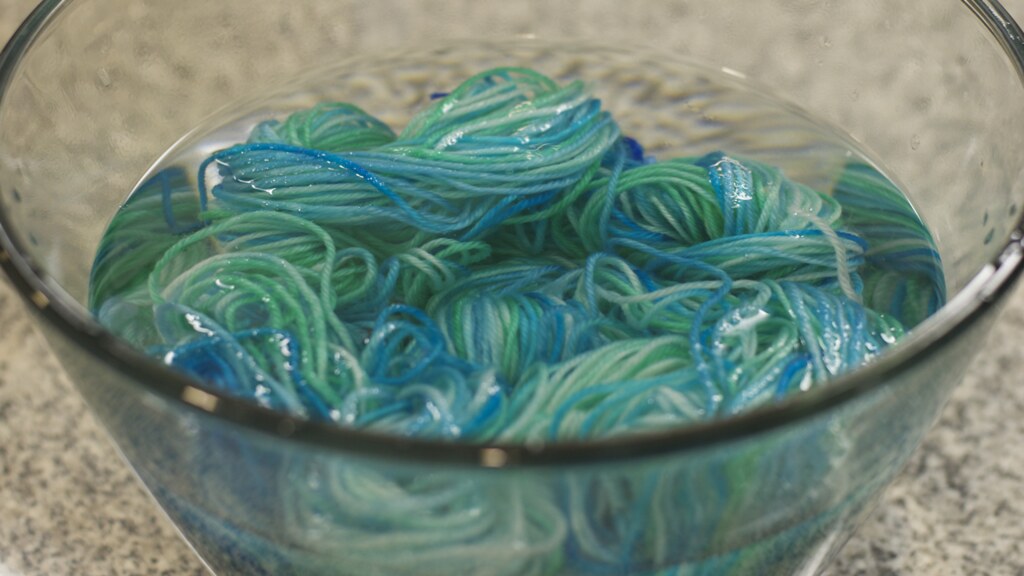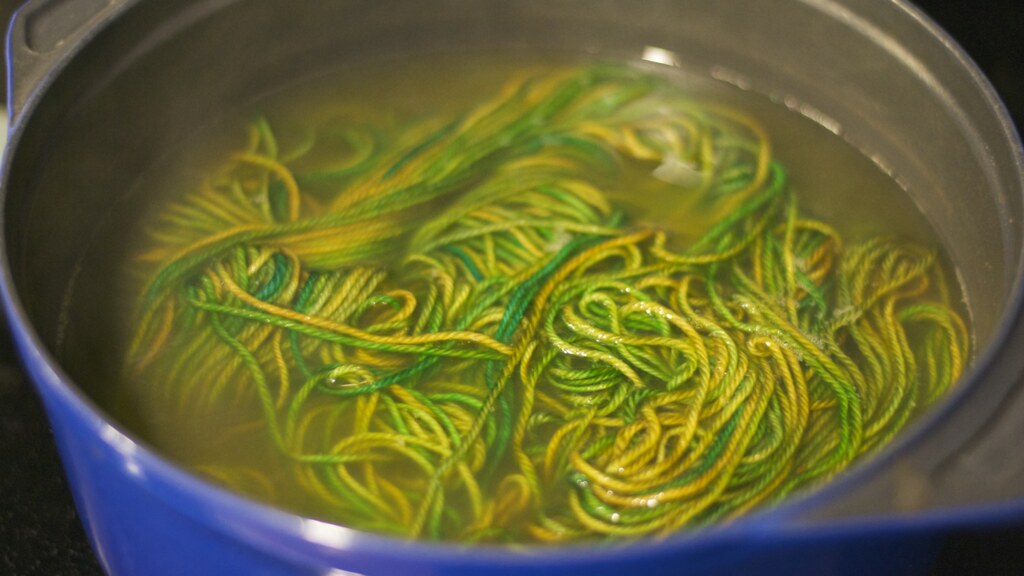In addition to having that naturally dyed skein brightening my stash, I had a skein that had the exact opposite effect on me. It was the result of a past food dye experiment that did not yield very impressive results. I thought the colors were too light and bland, and almost every time I saw that skein I would think "Someday I'll do something with you, poor little guy".
Lately I've been stockpiling used tea bags and freezing them. It took me a while to get a substantial number saved because I prefer loose leaf tea, but the other day I decided that it was finally time to put them to good use.
I followed pretty much the same exact method as I did last time, starting with soaking the yarn in a 1:3 white vinegar to water solution. The colors actually appear much darker here than when they are dry.
Then I added ~30 used tea bags (most of them were generic black teas) to boiling water and let them sit until the water was saturated.
The base yarn was Knit Picks Bare Merino DK, which really dyes well and has an excellent texture following the process, I love working with it.
I removed the tea bags and added my yarn...
...and ended up with this! I think it is a huge improvement, the colors are more rich and have a delicate gradient. The best part of this was, it took very little time and effort for such a wonderful effect. I'm very pleased with it.
Now that skein won't be pitied anymore and I'm already dreaming of what I'll knit with it!
Do you have any yarn in your stash that just doesn't appeal to you very much?


















































